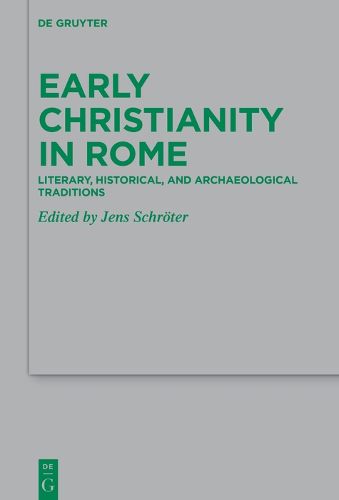Readings Newsletter
Become a Readings Member to make your shopping experience even easier.
Sign in or sign up for free!
You’re not far away from qualifying for FREE standard shipping within Australia
You’ve qualified for FREE standard shipping within Australia
The cart is loading…






The volume explores the beginnings of Christianity in Rome, the political and religious center of the Roman empire. Early Christian writings such as Paul's letters to the Romans, the Acts of the Apostles, First Clement and the Shepherd of Hermas demonstrate that Rome became an important place for early Christians by the end of the first/beginning of the second century. In this period, one can also detect a early separation of Jewish and Christian communities in Rome. In the second century, several prominent philosophical teachers came to Rome and taught the Christian message from their respective viewpoints. To these belong Marcion, Valentinus, Justin Martyr and Tatian. The diverse interpretations of the Christian message resulted in the formation of different communities, e.g. the Marcionites, the Valentinians and the "main church" to which apparently Justin belonged. The book also examines the archaeological remains of the early Christians. Although the evidence is sparse, some things can be said about the burial places of Peter and Paul and about the so-called "house churches" of early Christians. Taken together, the articles in this volume will advance the discussion about Christianity in Rome in the first three centuries.
$9.00 standard shipping within Australia
FREE standard shipping within Australia for orders over $100.00
Express & International shipping calculated at checkout
Stock availability can be subject to change without notice. We recommend calling the shop or contacting our online team to check availability of low stock items. Please see our Shopping Online page for more details.
The volume explores the beginnings of Christianity in Rome, the political and religious center of the Roman empire. Early Christian writings such as Paul's letters to the Romans, the Acts of the Apostles, First Clement and the Shepherd of Hermas demonstrate that Rome became an important place for early Christians by the end of the first/beginning of the second century. In this period, one can also detect a early separation of Jewish and Christian communities in Rome. In the second century, several prominent philosophical teachers came to Rome and taught the Christian message from their respective viewpoints. To these belong Marcion, Valentinus, Justin Martyr and Tatian. The diverse interpretations of the Christian message resulted in the formation of different communities, e.g. the Marcionites, the Valentinians and the "main church" to which apparently Justin belonged. The book also examines the archaeological remains of the early Christians. Although the evidence is sparse, some things can be said about the burial places of Peter and Paul and about the so-called "house churches" of early Christians. Taken together, the articles in this volume will advance the discussion about Christianity in Rome in the first three centuries.